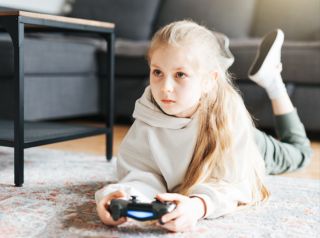Internet Addiction
Managing Summer Screen Time for Kids with ADHD
Worry less about summer screen time by making outdoor activities more engaging.
Posted July 17, 2023 Reviewed by Lybi Ma
Key points
- Don't let your kids play video games 24/7 this summer.
- Worry less about the time spent on screens and more about getting kids outdoors and with other people.
- Creatively use tech tools to encourage physical, social, and creative play.
- Screen time is easy, parenting is not.
It’s the middle of summer vacation and many parents are looking for ways to keep their kids with ADHD engaged. One tried and true method is to let them sit in front of a screen. They will probably play quietly and not bother anyone. However, if you’d like to have your children, particularly those with ADHD, do something more productive you’ll have to be proactive. You need to manage your child’s summer screen time and find some alternatives—even those that involve technology. Your child might prefer hours upon hours of playing Minecraft, watching YouTube videos, or playing the newest Zelda game, Tears of the Kingdom. However, for kids with ADHD, exercise, nature, and opportunities to engage with peers are crucial to improving their social, executive functioning, and focusing skills. Too much time spent in front of a screen takes away from these other activities.

Not all screen time is bad for kids, but children with ADHD have a tendency to use it too much and may struggle to transition away from screens to other types of play. There is compelling data that playing video games for an hour a day can actually be helpful to children. It can improve psychological and academic development and performance, along with their mental health and well-being. However, too much time spent in front of screens takes away from other activities that promote learning and skill development. For kids with ADHD, these concerns are magnified.
The main goal: Set clear and effective screen limits
The most important strategy for managing your child’s screen time is to set clear and effective limits on a child’s screen time during the summer. Summer screen limits are crucial because there is so much more free time, Kids with ADHD benefit from learning how to entertain themselves in the absence of screens. Concurrently, it is important to allow them gaming time that is not being used as a reward, because they will become over-focused on wanting to play. By scheduling it into their day and removing it from being a reward, children may be less likely to crave screen time. It is important to create the expectation that your child’s play will consist of more than screen time. Developing a healthy Play Diet, where kids are expected to have a balance of social, physical, creative, unstructured, and digital play is a great starting place. Once you have established reliable limits, you can allow your child with ADHD to enjoy their summer screen time and pursue the following recommendations.
How to leverage the love of technology to create new hobbies and activities this summer
Rather than focusing on restricting screens and technology for kids with ADHD, use their desire for screen time as a tool to encourage participation in other activities. Essentially, take your child’s love of technology and incorporate it into activities that get them outdoors, facilitate the growth and development of new hobbies, and get them to engage with peers and family on a face-to-face basis. Below are four easy ways to incorporate technology into your child’s activities this summer.
1. Encourage digital photography. If they don't have a phone, let them use yours. Take pictures together. Take piles of pictures, particularly involving family activities such as making dinner, going on trips, visiting relatives, or even everyone playing a board game together. Then encourage your kids to help you to share these on Facebook or Instagram.

2. Experience nature on a screen. Don’t ignore the real world: go on hikes, to the beach, and to the zoo. You probably can’t take a cross-country trip this summer. However, you can watch nature videos together that can spur exploration. Maybe you won’t go to Sequoia National Park this summer after watching a YouTube video. But, you can find places to explore in your area where there are large trees, just as they did in the video. Encourage your child to select videos and documentaries where the content is about local natural resources, state parks, wildlife, and scenery. For example, if you live near the ocean you can find videos of sharks and whales. There are some great sources of documentaries on Animal Planet, National Geographic, and even Netflix and Hulu.
3. Exercise using technology. Many kids and adults enjoy the feedback they get from a fitness tracker, such as an Apple Watch or Fitbit, that measures movement throughout the day. Another option is an exercise and fitness tracker app. Many kids with ADHD will become more engaged if you turn fitness into a competition where tracking each and every movement accords them points. Set it up so that weekly winners get to choose a family activity, like a restaurant, a movie to rent, or the choice of a day vacation. This type of family competition works best when everyone gets a chance to win.
4. Purchase a few games that you’d like your kids to play. Rather than fighting the technology, curate it. There are some great new games that can benefit kids with ADHD, such as Pokemon Scarlet and Violet and Legend of Zelda: Tears of the Kingdom. The key ingredient in this type of screen time is to get your kids to play with others. Then later discuss the strategies they used while playing the games. With these types of games, they will hone their decision-making and executive functioning skills—if they connect their game-based learning to the real world. Involved parents can help to facilitate this type of learning. Better yet, if you play along with them, you might learn a thing or two yourselves.


